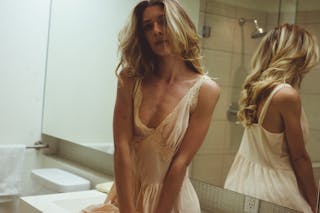Creating An Asexual Character For TV Showed Me We Have A Way To Go
Are you tired of seeing the same old romantic storylines in TV and film? It's time for more diverse representation, including characters who identify as asexual. We need to see a wider range of experiences and relationships on screen, and that means including asexual characters in the mix. Check out this article to learn more about how asexual representation is progressing in the entertainment industry and why it's so important here.
When I first heard that a TV show was introducing an asexual character, I was thrilled. As someone who identifies as asexual, I was excited to see a character on screen who represented me and others in the asexual community. However, as I watched the show, I couldn't help but feel disappointed by the way the character was portrayed.
If you're looking for a fun and exciting way to spice up your alone time, why not try out some 2D porn games at Ad-Sex?
The Asexual Representation on TV
Explore the exciting world of harem sex games and unleash your fantasies.
The character, who shall remain nameless, was depicted as emotionless and robotic, fitting into the stereotype that asexual individuals lack feelings and emotions. This portrayal not only perpetuates harmful stereotypes, but it also fails to accurately represent the diverse experiences of asexual people.
Discover the differences between Growlr and EliteSingles and make an informed decision for your dating life.
As a viewer, I felt frustrated by the lack of nuance and depth given to the asexual character. It was clear that the show's creators had not taken the time to understand asexuality and the spectrum of experiences within the community. This lack of understanding is not only disappointing, but it is also harmful to asexual individuals who are already marginalized and misunderstood.
The Need for Authentic Representation
As a dating blog, it's important to recognize the importance of authentic representation in media, especially when it comes to marginalized communities. Asexual individuals deserve to see themselves reflected in the stories they consume, and they deserve to see accurate and respectful portrayals of their experiences.
Creating an asexual character for a TV show is a step in the right direction, but it's clear that we still have a long way to go. It's not enough to simply include a token asexual character – we need to see well-rounded and authentic representations that reflect the diversity of the asexual community.
The Impact on Asexual Individuals
The harmful portrayal of asexual characters on TV can have a profound impact on asexual individuals. When they see themselves depicted as emotionless or robotic, it can reinforce the idea that their experiences are not valid or worthy of recognition. This can lead to feelings of alienation and isolation, further perpetuating the stigma surrounding asexuality.
As a dating blog, it's important to recognize the impact that media representation can have on individuals' self-esteem and sense of belonging. Asexual individuals deserve to see themselves represented in a positive and affirming light, and they deserve to feel seen and understood by the stories they consume.
Moving Forward
In order to create more authentic and respectful representations of asexual individuals, TV show creators and writers need to do their research and consult with asexual individuals. They need to understand that asexuality is a spectrum and that there is no one-size-fits-all experience.
As a dating blog, it's important to advocate for the accurate and respectful representation of asexual individuals in media. By raising awareness and challenging harmful stereotypes, we can help create a more inclusive and affirming media landscape for asexual individuals.
In conclusion, the introduction of an asexual character on a TV show is a positive step, but it's clear that we still have a long way to go. As a dating blog, it's important to recognize the impact that media representation can have on asexual individuals and to advocate for more authentic and respectful portrayals. By working together, we can help create a more inclusive and affirming media landscape for all individuals, regardless of their sexual orientation.
- https://hookupsites.ua-sex.com/posts/how-to-prepare-for-anal-sex/
- https://chatting.themountaintopplay.com/posts/best-genderaffirming-sex-toys/
- https://matchmaker.campsupernow.com/posts/dating-as-a-nonbinary-person-5-lessons-you-learn-when-you-date-and-are-nonbinary/
- https://dating-app.timebombrecordings.com/posts/9-pieces-of-no-bs-dating-advice-from-cosmopolitan-uk-cover-stars/
- https://datingguide.timebombrecordings.com/posts/how-to-do-the-corkscrew-position-a-sex-expert-explains/
- https://hookupguide.timebombrecordings.com/posts/self-esteem-prioritise-pleasure-breakups-arent-failures/
- https://dating-for-free.themountaintopplay.com/posts/how-your-masturbation-habits-impact-sex-with-partners/
- https://chat.getweps.com/posts/what-sex-after-giving-birth-really-feels-like/
- https://dating.timebombrecordings.com/posts/rough-sex-rough-sex-ideas-and-tips/
- https://dating-services.campsupernow.com/posts/my-best-sex-ever-was-with-a-married-couple/
- https://find-a-girlfriend.getweps.com/posts/why-friend-breakups-are-the-worst-ending-a-friendship/
- https://dating.timebombrecordings.com/posts/sex-toys-for-men-16-best-male-sex-toys/
- https://dating-for-free.themountaintopplay.com/posts/best-girl-on-top-sex-positions-woman-on-top-sex-positions/
- https://hookup.thehottieandthenottie.com/posts/best-girl-on-top-sex-positions-woman-on-top-sex-positions/
